- March 16, 2024
What Is Prey Drive in Dogs? A Vet-Approved Guide to Understanding It
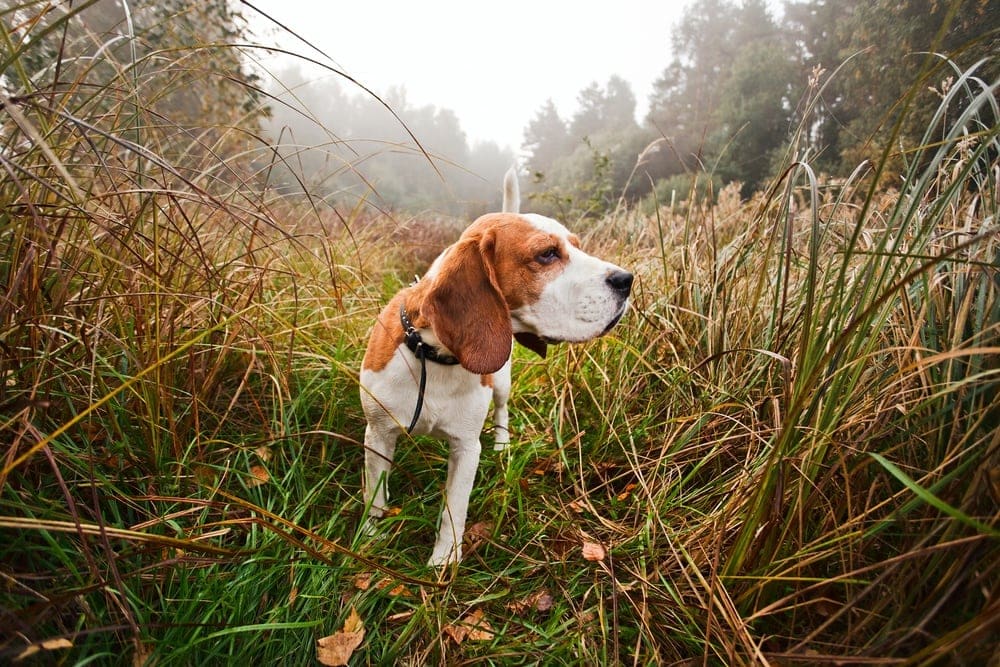
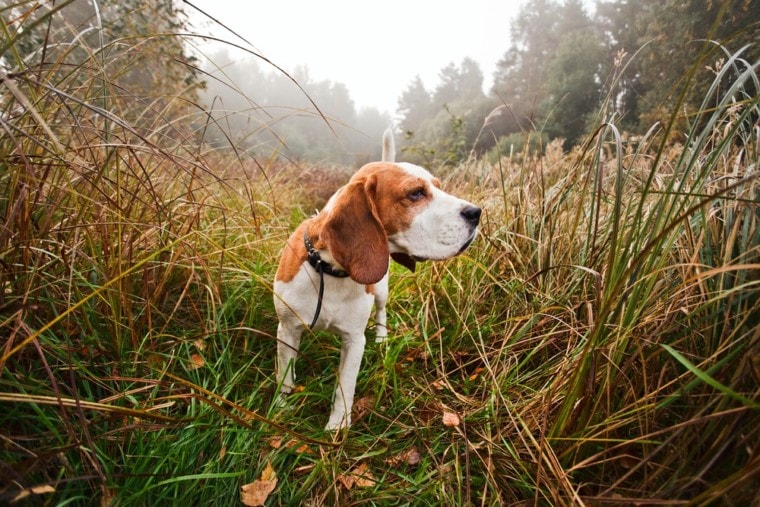

The information is current and up-to-date in accordance with the latest veterinarian research.
While you may not be aware of it, your dog may display their prey drive during a game of tug-o-war, when retrieving a stick, or chasing a ball. Also, when you notice your dog staring down the neighbor’s cat, or sniffing the area where another animal has been, many generations of predatory behavior are at play. This behavior and engagement are because of their innate prey drive, which drives them to chase and hunt.
However, these natural tendencies to hunt prey may sometimes lead to undesirable behavior for a dog living in modern times, especially in breeds and individuals with a particularly high prey drive. Understanding the behavior fully, and knowing when to step in, can also be difficult. The good news is that the prey drive in dogs can be quite manageable, and once you understand it, it can be somewhat controlled through training.

What Is the Prey Drive in Dogs?
A dog’s prey drive is an instinctual behavior that may include stalking, chasing, and catching smaller animals. Because all dogs are descended from predatory wild ancestors, they exhibit some degree of prey drive. However, some dogs have a higher prey drive, and their skills may be more honed than others. Several breeds may enjoy the excitement of the hunt, while others may seek to catch and kill their prey.
In most cases, the prey drive is harmless. Dogs enjoy the chase when playing fetch, and removing the stuffing from a toy is a preferable alternative for dogs that want to catch their ‘prey’. This instinct can actually be helpful when training dogs for agility, herding, or working as police or military dogs. It can also serve as a means to provide stimulation, enrichment and exercise to an active, athletic breed.
A stronger prey drive, however, may have negative consequences for some dogs, such as chasing and harming smaller animals, or pursuing vehicles and bikes. Their prey drive may be distracting when you are trying to train or spend quality time with your dog, and may become a problem for some families with smaller animals.
Prey drive and aggressive tendencies are sometimes confused by dog owners; prey drive is motivated by instinct, while aggression is an emotional response. Although both can be tamed with a lot of patience and persistence, a dog with a strong hunting drive is typically easier to manage than a dog with aggressive tendencies.
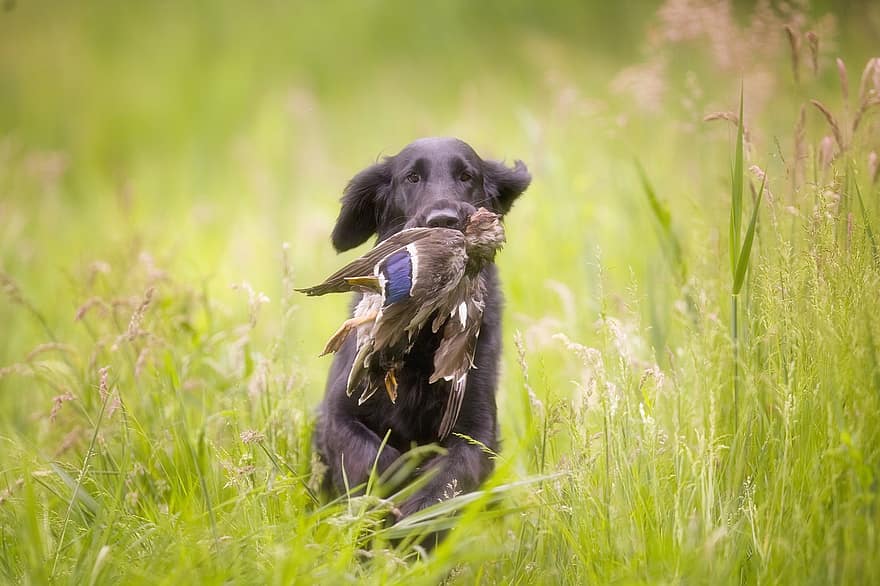
Signs of Prey Drive in Dogs
Knowing the signs of the prey drive in dogs can help you better understand if it is an innate behavior or a more aggressive behavior that may need attention.
Signs of the prey drive include:
- Undisturbed eye contact, stiff body, and shaking with anticipation
- A quiet growl, which will sometimes be accompanied by a bark
- Stalking
- Drooling and excitement
- Chasing after small creatures or anything that may move quickly
- Leash pulling in an effort to reach the target prey
Prey Drive vs. Aggression
A dog’s prey drive can often be confused with aggressive behavior by some dog owners, but the key difference is that prey drive is innate and driven by instinct, while aggression is driven by emotions such as fear. Furthermore, dogs behaving aggressively will usually create more distance from the trigger of their aggression, whereas a dog reacting to their prey drive will try to get closer to their prey or target.
The good news for owners of dogs with a strong prey drive is that this behavior is much easier to manage and redirect. Emotional or reactive behaviors like aggression are more difficult to combat, as the triggers and response are more unpredictable, and your dog is less likely to be responsive to you when in a heightened state. This doesn’t mean that aggressive behavior cannot be overcome, but it does require a very different approach.
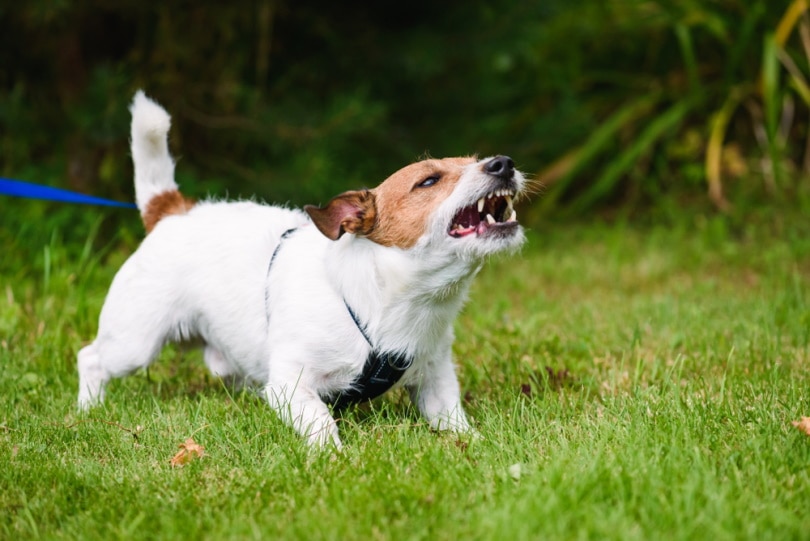
Taming Your Dog’s Prey Drive
The key to tackling an instinctive behavior like prey drive is that your aim should not be to stop the behavior, but to redirect it into a safe and controllable outlet. Attempting to completely suppress an instinct will usually fail, and result in frustration for both owner and dog. Here are some tips to help you take control of your dog’s prey drive, and make sure they are able to express their natural behaviors without harming themselves or other hapless creatures:
Start Young
The earlier you start training your dog, the better. You can begin training and socialization when you bring your pup home. If you’re fortunate enough to raise your dog from a young age, you’ll have an easier time training them.
Become Familiar with Your Dog Prey Drive
Learn the specifics of your dog’s prey drive and how it presents itself. Determine if chasing a ball or toy satisfies your pet’s urge to hunt or if they’re dangerously fond of chasing cars. When taming your dog’s prey drive, especially around other animals or young children, the stronger the prey drive, the more precise you need to be.
Redirect Your Dog’s Attention
Learning how to divert your dog’s attention from the potential prey can be helpful. Teach your dog orders like “stay” or “leave” and make eye contact to keep focus on the task at hand. This is an essential step, and one that should be mastered before any other steps are taken.
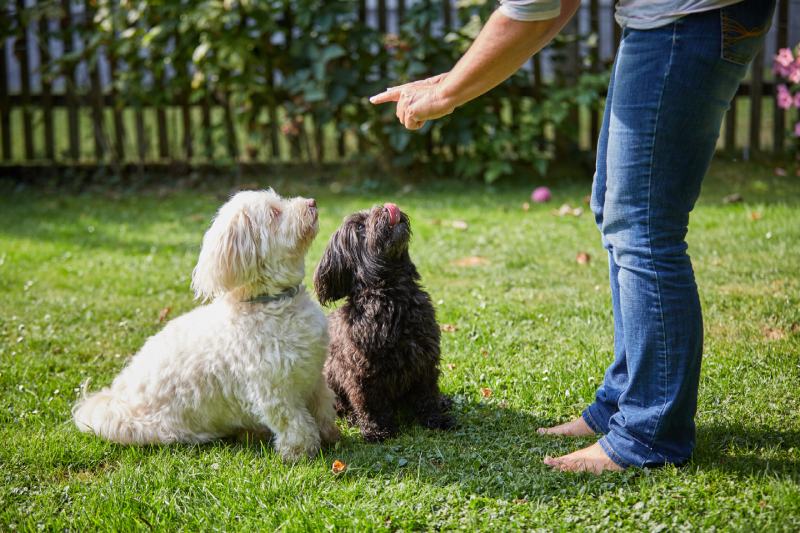
Channel Your Dog’s Prey Drive and Energy Appropriately
Predatory behavior does not have to end in a capture/kill scenario. Encourage dogs to mimic the parts of the prey drive behavior in a safe and appropriate manner by providing them with games. For instance, they can chew on a toy in the yard instead of chasing wild animals. Ensure your dog gets enough exercise and mental stimulation by playing games such as fetch and tug-of-war and engaging in agility training and long walks. Here are some great ways to allow your dog to channel their instincts and energy in a way that keeps them, and the neighborhood cats, safe.
Ways to channel your dog’s instincts and energy:
- Agility
- Flyball
- Scent work
Some of these activities can increase your dog’s risk of injury and developing arthritis, and you should always talk to your vet to decide if they are right for your dog.
Pay attention to Triggers
When you and your dog are out for a walk, pay close attention to what they want to chase, and what sort of things trigger a reaction. When necessary, you can direct your dog’s attention elsewhere by being aware of their triggers and avoiding them, or redirecting their attention.
Decide on an Emergency Command
Perfect recall training can be very helpful, but when a dog’s prey drive kicks in, that training may easily go out the window. To maximize the likelihood of getting your dog to stop when they are in chase mode, you should come up with an emergency cue. The idea is to only use this special term when necessary. Decide on a command that you are unlikely to use in everyday situations. Short, sharp words are best, or a whistle can also be useful. Train them to associate this command with a very positive result, like their favorite treat or toy, and hopefully, the appeal of this reward will be enough to interrupt the chase.
Professional Training
Seeking professional assistance when in doubt is a very sensible idea. Dog trainers have plenty of experience dealing with dogs with a high prey drive. Relying on people who have undergone considerable training and knowledge of dog behavior is a highly effective approach to managing a high prey drive. Your vet is another great source of advice.
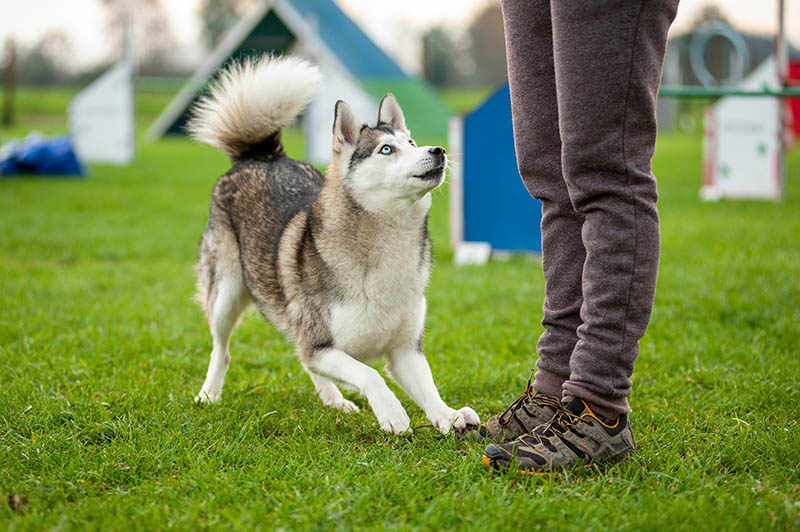

Frequently Asked Questions (FAQs)
Is the Prey Drive Dangerous?
Dogs with low prey drive often don’t pose a threat to those around them, but you should exercise extra caution if you notice prey-drive behaviors such as stalking, chasing, or biting other animals. If your dog has shown any signs that they might bite, they should always be kept on a leash and muzzled around other animals. This type of behavior is best addressed with the help of your vet or behaviorist.
Small children can be particularly triggering for dogs with prey drive, both within the house and outside on bikes or skateboards, so if your dog shows signs of a high prey drive, you will need to be extra cautious in these situations.
Almost all dogs display some prey drive, but they can typically control their urges by playing tug of war or fetch. However, if your dog exhibits a strong prey drive, it’s essential to consult a specialist to correct this potentially harmful behavior. Not only could it lead to your dog being injured during a chase, it may also result in a child, dog, cat, or other small pet being hurt or worse.
Can Prey Drive be a Good Thing?
There is a positive side to the prey drive. It describes a dog’s level of enthusiasm or motivation to engage in behaviors associated with hunting or pursuing an object, which means that training dogs for agility competitions or working as military and police K-9s can benefit significantly from this instinctive behavior.
Additionally, it explains why sporting dogs make good hunting partners, and why herding breeds are effective at rounding up livestock. As a companion at home, a high prey drive may make your pet more playful and energetic, but it can also make for a frustrated or destructive dog if those instincts don’t have a good outlet.
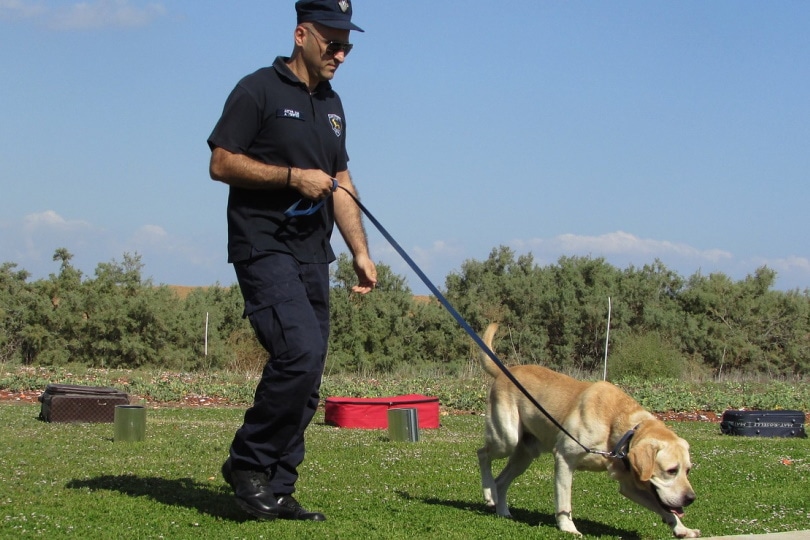
Which Dog Breeds Have a High Prey Drive?
The strongest prey drives are typically found in dogs bred to either hunt or herd. These breeds include Border Collies, Australian Shepherds, Greyhounds, Beagles, Spaniels, Pointers, and Bull Terriers.
While not bred for hunting or herding, some working group breeds, such as Siberian Huskies or Boxers, can have a high prey drive and may need careful supervision around smaller pets.

Conclusion
Every dog has an innate prey drive to some degree. While some dogs may have a higher prey drive than others, all dogs display the trait since it is instinctual. It is perfectly natural and is mostly nothing to be concerned about, especially when dogs are provided with suitable ways to engage with their natural predatory behavior. However, it can become problematic if the urge to chase and catch is stronger than their ability to follow commands. Understanding your dog’s unique prey drive can assist you in providing the best energy outlet, training, and environment for your dog.
Featured Image Credit: Igor Normann, Shutterstock
Tags
What do you think?
Related Articles

New Puppy Checklist: Gear You’ll Need for Your New Dog
Getting a new puppy is really exciting, but before you welcome them home, it’s important to prepare your space for them. Since puppies need a

How Big Do Mini Poodles Get? Vet Reviewed Average Weight & Growth Chart – Dogster
The information is current and up-to-date in accordance with the latest veterinarian research. Learn more » When you buy a Miniature Poodle, you might not

Can Police Dogs Smell Nicotine? Vet Verified Facts & Info – Dogster
The information is current and up-to-date in accordance with the latest veterinarian research. Learn more » While cigarette sales have been declining steadily for decades,

How Old Is 5 in Dog Years? Vet-Approved Guide to Each Size of Dog – Dogster
The information is current and up-to-date in accordance with the latest veterinarian research. Learn more » A common method for calculating a dog’s age is

